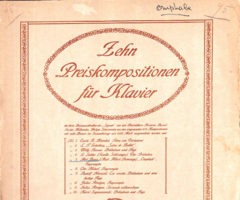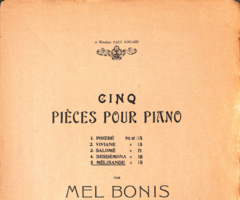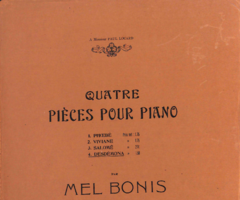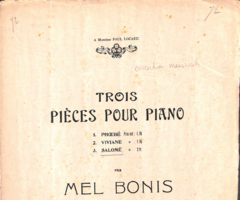Femmes de légende, seven pieces for piano
Phœbé, op. 30 – Viviane, op. 80 – Omphale, op. 86 – Salomé, op. 101/1 – Desdémona, op. 101 – Mélisande, op. 109 – Ophélie, op. 165/1
In 2003, under the title Femmes de légende (Women of Legend), Christine Géliot gathered seven pieces for piano composed over some fifteen years. Phœbé, Viviane and Salomé had been published in 1909 by Leduc, who also brought out Desdémona in 1913, and then Mélisande in 1925 (the work may in fact have been composed in 1898). Omphale, on the other hand, entered Simrock’s catalogue in 1910, after having been selected for the competition organized by the Berlin periodical Signale für die musikalische Welt. Ophélie, composed in 1909, remained unpublished throughout the composer’s lifetime, and was first published by Armiane in 1998. Orchestral versions also exist of Salomé and Ophélie. Though Mel Bonis never thought of these pieces as a cycle, the subjects she chose were ideal as a collection. She probably projected herself onto these female figures drawn from ancient mythology, legends or dramatic works. She depicts them with a very personal poetry, in pieces that count among the greatest of her piano works: Phœbé and Mélisande dream in a nocturnal mood, Desdémona pours out her melancholy in hushed tones, and Ophélie seems to float on the waters that are about to drown her. By contrast with these evanescent women, who are often the victims of men’s aberrations, the others are charmers: Viviane dances with a jaunty liveliness, while the sensual, mysterious Salomé is more impulsive (reminding one of the heroine of Strauss’s opera, which had been performed in Paris in 1907) and Omphale uses all the ploys of seduction, from whimsical cajolery to passionate arousal.




